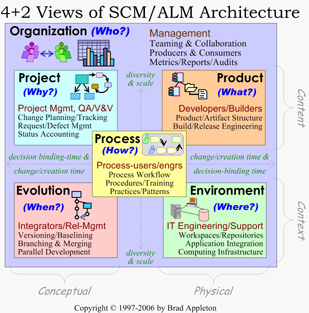In this article, Ronald Kandt describes ten basic principles that support configuration management activities, and then goes on to describe twenty three "fundamental" practices, which are split across the categories of: Management Practices, Quality Practices, Protection Practices, and Tool Practices.
In this entry, I'll enumerate Kandt's Tool Best-Practices for SCM (in priority order, with the most important ones listed first):
- Practice 19:
- Check code in often
Kandt goes on to explain "This practice should be constrained when checking in code on the primary development branch. That is, developers should only check in working versions of code to a [primary] development branch."
The main reason given is to ensure against loss of change by making sure the code is in the repository. So although initially it might seem this practice is about committing in small talks (which I'm sure Kandt would approve), that doesn't appear to be what he's emphasizing. This really seems to be about frequent use of "Private Versions" and then, before doing a Task-Level Commit, making sure one does a Private Build and runs Unit Tests and Smoke Tests as part of the Codeline Policy.
In other words: "If it ain't checked-in, it don't exist!" - Practice 20:
- Configuration management tools should provide patch utilities
The stated benefit here is to support incremental release/deployment and also remotely submitted changes over slow telecommunication connections. - Practice 21:
- Do not work outside of managed workspaces
Seems like the "Private Workspace pattern to me - Practice 22:
- Do not share workspaces
This is sort of reinforcing that the workspace should be private rather than shared. Having said that, while I agree shared workspaces (not include Pair-Programming) shouldn't usually be the norm, I have seen cases where it can work quite well. - In order for this to work, there must be an explicit "protocol" agreed upon up-front by all the contributors to decide who doing what, when, and to what (not just who is modifying which files when, but who is building what else and when) and/or how to rapidly communicate who is doing what when. See also work by Andre van der Hoek et.al. on Continuous Coordination: A New Paradigm for Collaborative Software Engineering Tools and related work on the "Palantir" project.
- Practice 23:
- When developing software on a branch other than the primary branch, regularly synchronize development with the development branch
This seems like mainlining (the Mainline pattern) and rebasing (a.k.a. Workspace Update). Only I would say that regularly synchronizing should apply to private workspaces/sandboxes even when they aren't using a private or task branch. The more general rule would seem to be the Continuous Update pattern.


